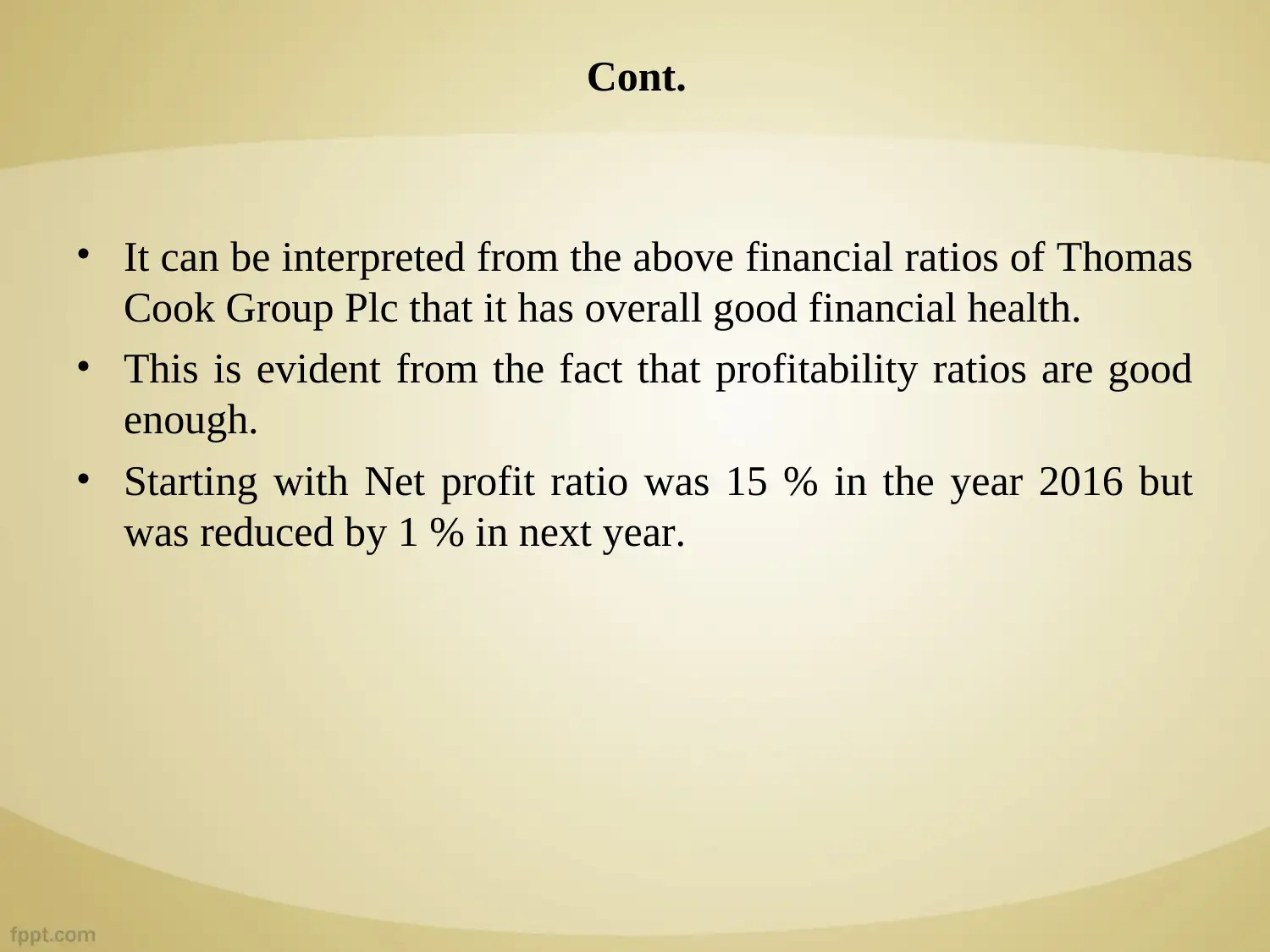Financial Analysis Report: Thomas Cook Group PLC, Finance Analysis
VerifiedAdded on 2023/03/20
|10
|469
|82
Report
AI Summary
This report presents a financial analysis of Thomas Cook Group PLC, focusing on its financial performance between 2016 and 2017. The analysis includes an interpretation of financial statements, specifically examining profitability, liquidity, and efficiency ratios. The report highlights key observations, such as the slight decrease in the net profit ratio and the steady return on assets. It also discusses the implications of the current and quick ratios, indicating potential challenges in meeting short-term obligations. Furthermore, the analysis covers the inventory turnover and debtors turnover ratios, providing insights into the company's operational efficiency and credit policies. The report concludes with the inclusion of EPS and dividend payout ratio information from 2017, reflecting the company's earnings and shareholder benefits. References to relevant academic sources are also provided.
1 out of 10

















![[object Object]](/_next/static/media/star-bottom.7253800d.svg)